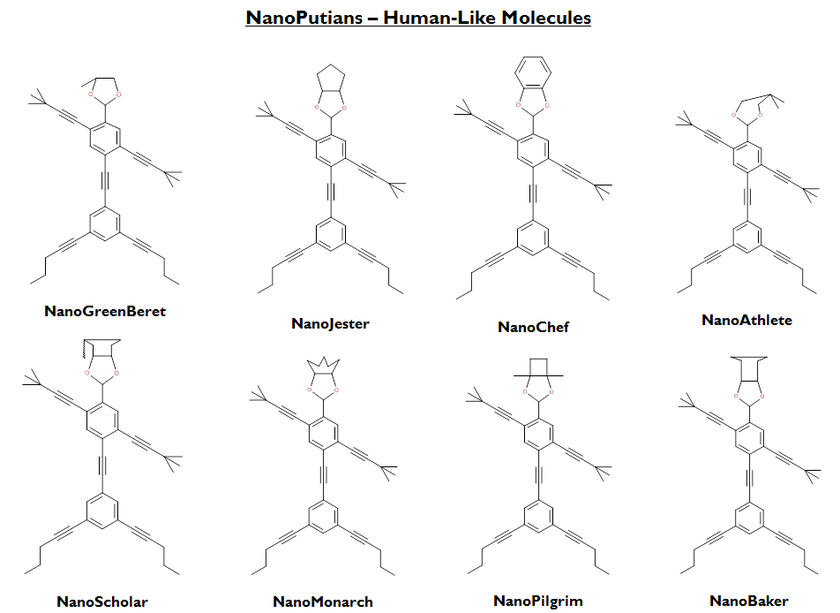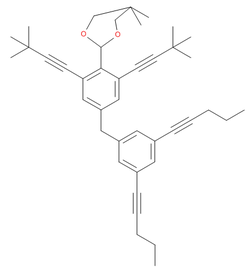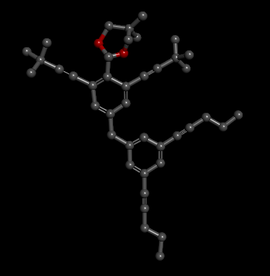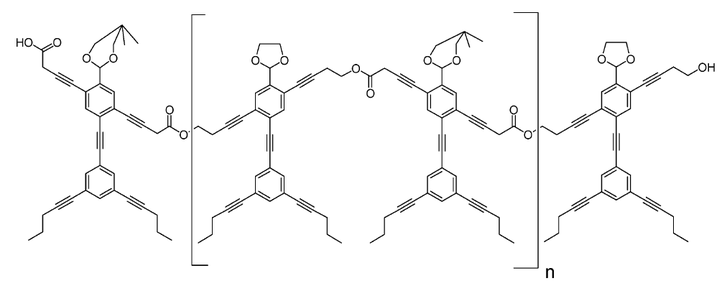August 2013
NanoPutians - Human-like molecules, where science meets art.
13/8/13
NanoPutians are 2-nanometre (0.000000002 metres)-tall anthropomorphic molecules in monomeric, dimeric, and polymeric form. Put simply, they are people shaped molecules synthesised by James Tour and colleagues at Rice University, Texas in 2003.
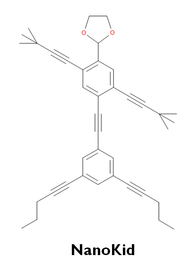
The name NanoPutian comes from the Lilliputians that lived in Jonathan Swift’s classic story Gulliver’s Travels and their size as nano means 1x10-9 (or 0.000000001) metres. The NanoPutians were created as part of a chemistry education program at Rice University aimed at introducing organic chemistry and nanotechnology to young students.
NanoKid was used as the basic skeleton structure to produce other members of the family each with a profession. The NanoProfessionals were produced by reacting NanoKid with a diol in a kitchen microwave oven. Chemists use a technique called Nuclear Magnetic Resonance (NMR) which uses powerful magnets to determine structures of compounds. As yet there are no chemical uses for NanoPutians, but when combined to form larger compounds, they are being investigated for use within the microchip industry.
NanoKid was used as the basic skeleton structure to produce other members of the family each with a profession. The NanoProfessionals were produced by reacting NanoKid with a diol in a kitchen microwave oven. Chemists use a technique called Nuclear Magnetic Resonance (NMR) which uses powerful magnets to determine structures of compounds. As yet there are no chemical uses for NanoPutians, but when combined to form larger compounds, they are being investigated for use within the microchip industry.
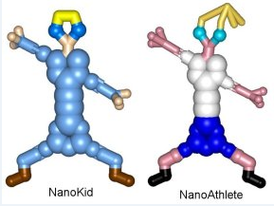 Cartoon versions of NanoKid and NanoAthlete
Cartoon versions of NanoKid and NanoAthlete
To find out more about NanoPutians visit the NanoKid website which contains videos and games of these comical molecules.
The field of nanotechnology has many future possibilities in areas such as medicine where nanodevices could be used to deliver drugs, to precise areas of the body, to monitor vital signs or perform delicate operations. A nanoscale coating on glass could help turn the sun's energy into electricity, and nanotech could also help make light bulbs more efficient.
Nanotechnology is currently being used as a hydrophobic (water fearing) coating to repel waster and oil from fabrics, plastics, brick and many more materials. See the You Tube clip below.
The field of nanotechnology has many future possibilities in areas such as medicine where nanodevices could be used to deliver drugs, to precise areas of the body, to monitor vital signs or perform delicate operations. A nanoscale coating on glass could help turn the sun's energy into electricity, and nanotech could also help make light bulbs more efficient.
Nanotechnology is currently being used as a hydrophobic (water fearing) coating to repel waster and oil from fabrics, plastics, brick and many more materials. See the You Tube clip below.
References:
Chanteau, S. H. and Tour, J. M (2003)’ Synthesis of Anthropomorphic Molecules: The NanoPutians’, The Journal of Organic Chemistry, 68 (23)
http://en.wikipedia.org/wiki/Nanoputian
http://www.sciencenewsforkids.org/2004/06/the-incredible-shrunken-kids/
http://nanokids.rice.edu/
Chanteau, S. H. and Tour, J. M (2003)’ Synthesis of Anthropomorphic Molecules: The NanoPutians’, The Journal of Organic Chemistry, 68 (23)
http://en.wikipedia.org/wiki/Nanoputian
http://www.sciencenewsforkids.org/2004/06/the-incredible-shrunken-kids/
http://nanokids.rice.edu/
